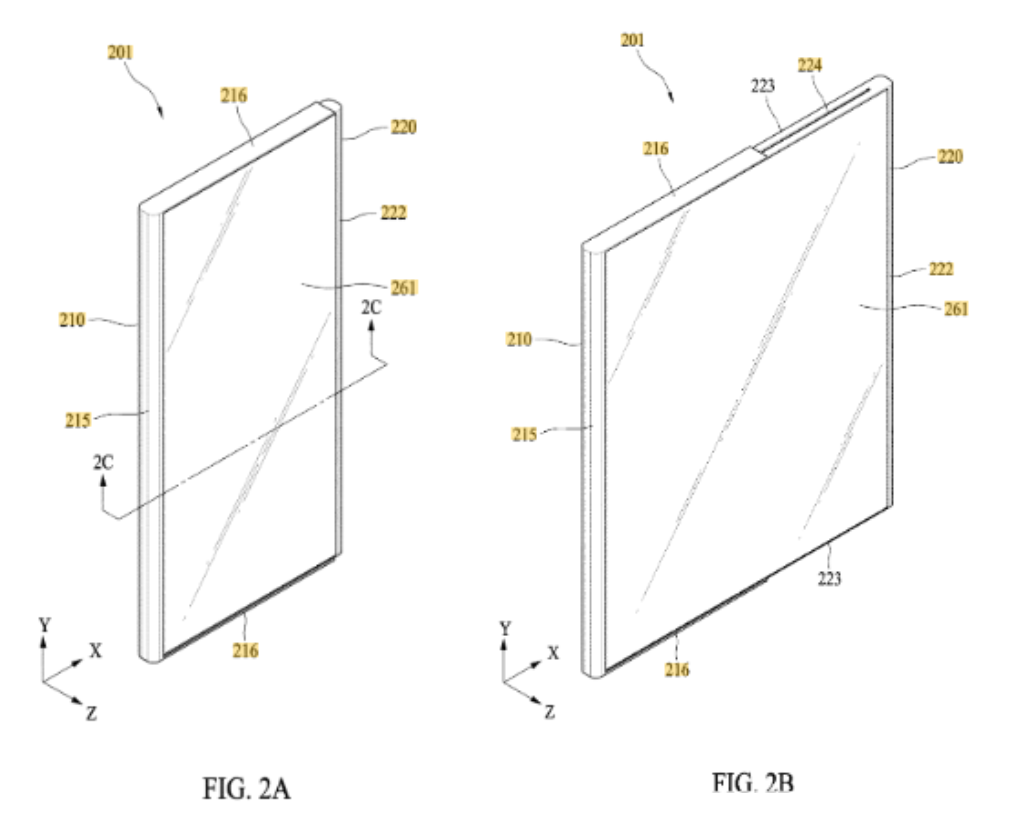Samsung has long been a pioneer in display technology, consistently pushing the boundaries of innovation to enhance user experiences across its product line-up.
Another ground-breaking technology from Samsung is the Rollable Flex, which can expand from a compact size to a much larger format.
Credits: CNET
Samsung’s Patented Technology
In a recent patent (US20220295651A1), Samsung describes how the Rollable Flex maintains consistent touch sensitivity as the display rolls out, bends, or stretches.
The device is equipped with a series of sensors embedded in the screen, which monitor any physical changes as the display expands. These sensors detect shifts in the screen’s shape and send real-time data to the device’s processor, which then adjusts the touch sensitivity to ensure smooth and accurate interactions.

The system plays a crucial role because the touch sensitivity of a display often changes when it’s bent or stretched. Samsung’s technology addresses this by automatically adjusting the sensitivity, ensuring that the user experience stays consistent whether the display is compact or fully extended.
What sets this technology apart is its ability to adjust on its own. As the display bends or expands, the processor fine-tunes the touch panel to maintain smooth and accurate interactions, delivering the responsiveness users expect. It works like a smart system within the display, where every physical change is smoothly handled by built-in algorithms.
The Roller System and Expansion Flexibility
The patent also dives deep into the roller system that winds and unwinds the display. This mechanism enables the screen to roll out smoothly from a compact form to a much larger display surface, expanding by several times its original size.
The device is designed to have a rollable display that expands or contracts depending on how far the slider moves from the first housing. The rollers help manage the movement of the display, and the internal space (S) houses important components without interference. This allows for a sleek, rollable display that can change size smoothly while keeping the device’s internal components safe and organized.
The Role of Artificial Intelligence
What truly sets this rollable display apart is the integration of artificial intelligence (AI). According to the patent, the system leverages AI to predict and optimize how the display reacts to different touch inputs. Over time, the device learns user preferences and adjusts accordingly, creating a highly personalized and responsive experience. The AI-driven sensor system also ensures that the display remains energy-efficient, consuming less power when in compact form and scaling up only when necessary.


